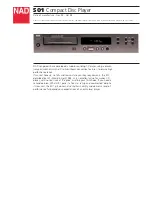
i.
Glue and resin buildup on the rollers and cutterhead will cause
overheating by decreasing cutting sharpness while increasing drag in the
feed mechanism.
ii.
The result can include scorched lumber, uneven knife/insert marks, and
chatter.
b. Solution:
i.
Ensure all glue-ups are thoroughly dry before being planed
1. Ensure as much dry glue as possible is removed before planing to
reduce wear on the cutters
ii.
Contact a Woodshop Lead to determine if the rollers and cutterhead
require cleaning.
5. Chip Marks or Indentations
a. Problem:
i.
Woodchip patterns embedded or embossed on the surface of the
workpiece after planing.
ii.
Chip indentation or chip bruising is the result of wood chips not being
thrown away from the cutterhead and out of the machine. Instead they are
carried around the cutterhead, deposited on the planed surface and
crushed by the outfeed roller. Some of the causes of chip indentation are:
1. Wood chips/sawdust not being properly expelled from the
cutterhead.
2. The type of lumber being planed. Certain species have a tendency
to chip bruise.
3. A high moisture content (over 20%) or surface moisture
4. Excessive depth of cut.
b. Solution:
i.
Use a proper dust-collection system
ii.
Lumber must be completely dry, preferably kiln-dried (KD). Air-dried (AD)
lumber must be seasoned properly and have no surface moisture.
iii.
Reduce depth of cut.
iv.
Contact a Woodshop Lead to make sure planer knives/inserts are sharp.
6. Rippled Cut
a. Problem:
i.
Regularly spaced indentations across face of workpiece are caused by
excessive outfeed roller pressure or excessive feed rate.
b. Solution:
i.
Reduce feed rate.
ii.
Contact a Woodshop Lead to check outfeed roller pressure
9




























